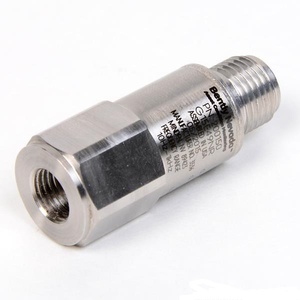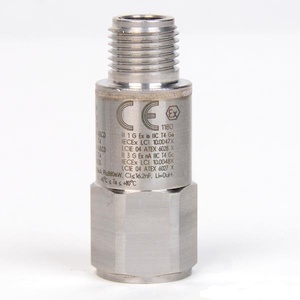
All categories
Featured selections
Trade Assurance
Buyer Central
Help Center
Get the app
Become a supplier

(16 products available)






















Electronic components, accessories, and telecommunications products come in various types. These serve different functions in electronic and communication systems.
Active electronic components are components that require an external power source to operate. They can amplify electrical signals. Examples include transistors, diodes, and integrated circuits. These components can generate, control, and store electrical energy. They play crucial roles in circuits by adding functionality.
Passive components are not able to amplify or control electric currents. They do not need external power to work. Capacitors, resistors, and inductors are the common examples. Despite not being active, passive components are essential. These components store, dissipate, or absorb electrical energy. They are used for power management and signal filtering.
These components enable connections between different parts of an electronic system.
Plug sockets facilitate the connection and disconnection of devices. This aids in the transfer of power or data without needing to directly modify the wiring or circuitry. They provide a convenient and flexible way to connect devices.
Sensors and transducers convert one form of energy into another.
Insisting on quality and longevity is vital. This is especially for electronic components, accessories, and telecommunications products.
Electronic components must have resistance-welded points. These points are vital for the durability and functionality of many electronic devices. They usually come into play for devices that require battery support.
The most common resistance-welded material is copper and copper alloy. It can be welded to steel or other alloys. There is usually a perfect bond between the two metals for optimal conductivity. The bond is also quite strong, so it can withstand mechanical stresses without losing connectivity.
Mobile phones normally have battery contacts made of nickel-plated brass. Sometimes they also come with contacts made of copper for more premium models. Nickel-plated brass provides excellent corrosion resistance. Thus ensuring long-term battery life and reliable performance even in challenging environmental conditions.
Copper offers superior electrical conductivity. Therefore, ensuring minimal energy loss during power transfer. It, however, may not be as corrosion-resistant as nickel-plated brass.
Electronic components in tablets and laptops often employ lead-bonded materials such as copper, copper alloy, and tin bronze. Copper and copper alloy are the preferred metals because they offer superior electrical conductivity. They ensure efficient power and signal transfer within complex electronic systems.
Tin bronze, on the other hand, is a cost-effective option. It provides decent conductivity and mechanical flexibility. This makes it suitable for applications where durability and resistance to wear are key.
Nickel silver and brass are the go-to materials for consumer electronics. They usually come with punch-through terminal components. These metals are ideal due to their excellent corrosion resistance and good electrical conductivity.
The Electronic Articles Dispensing System (EADS) is the go-to system for dispensing electronic articles to patients. It is in medical environments that need quick access to vital supplies. It may also be in high-traffic areas with large volumes of incoming and outgoing items.
By scanning the patient’s barcode, EADS can identify the required items and retrieve them swiftly. This ability allows for efficient stock management while ensuring patients do not get any wrong medication.
Mixed Reality Glasses use sensors and displays to merge virtual and augmented reality. They are mostly used in training and education to enable interactive learning experiences. These offer trainees hands-on experience in a safe and controlled environment. This is especially in fields such as medicine, aviation, and engineering.
The glasses also provide visual guidance for complex repair or maintenance tasks in industrial settings. This helps increase efficiency and accuracy for workers.
AI Sunglasses incorporate built-in audio and smart technology. They allow wearers to listen to music, take calls, or access virtual assistants without removing their glasses. Additionally, they feature voice command control for hands-free operation.
It provides a seamless and convenient way to stay connected while on the move. They offer UV protection and polarization. Therefore, ensuring users' safety and comfort while enjoying additional smart features.
Dynamic Facades are structural elements that adjust their properties in response to environmental changes. They improve energy efficiency in buildings by adjusting to light and temperature conditions.
This makes them ideal for use in corporate offices that require energy efficiency for cost-saving purposes. They enhance aesthetic appeal and offer sustainable benefits in green architecture designs.
3D Displays create interactive visual experiences for users. They are mostly used in advertising to create eye-catching, engaging content that attracts consumers’ attention. Also common in gaming and entertainment. These displays offer immersive experiences that enhance user engagement and satisfaction.
Making the right choice of electronic components, accessories, and telecommunications products boils down to several factors.
Determining the required functionality of a component will help make the right choice. Know the main purpose and the role the component plays in the system. For instance, will it store data or simply process it? Will it amplify signals?Knowing this will help in selecting a component that meets the system's needs.
Considering compatibility is also important. Pay attention to how the component interacts with other system elements. This fosters smooth operation. For instance, ensure that the electronic component's specifications meet the system’s requirements. They also should not conflict with those of the existing components.
Selecting components that are easily available in the market ensures they can be restocked in the future. It helps avoid supply chain disruptions. Prioritize those manufacturers with a reputation for producing high-quality components. Avoiding cheap electronics will ensure longevity and reliability. They, in turn, have a positive impact on performance.
While cost is an important factor, it is equally as vital to consider long-term value. So sometimes it is better to spend more on a high-quality component than save on a low-quality one. The former will offer better performance, reliability, and warranty.
Anticipating the future needs of a system will also play a part in making the right choice. Consider how the technology landscape may evolve. Then select components that will accommodate future upgrades or expansions. This will save time and money for restocking.
A1. Thermal paste is part and parcel of any component that has to stay cool. It usually fills microscopic gaps between surfaces to allow better heat transfer. Without it, components may overheat. The paste also diminishes energy consumption and extends the component's lifespan.
A2. Punch-through terminals are soldered components that penetrate PCBs. They offer superior strength and conductivity because they are mounted on both sides.
A3. Excess electronic components refer to surplus parts. They occur when businesses or individuals overspend, overestimate their needs, or mismanage inventories. They can also happen because of changes in technology. Such components may pose storage cost challenges to owners. Their disposal may, however, be eco-friendly.
A4. Through-hole components are electronic parts with leads that go through a PCB to be soldered on the opposite side. They are mostly used in older technology, like analog circuits, but are still in demand due to their robust connection in hardware.
A5. The excess electronic components can be recycled, donated, or sold. Another way is to try and use them all up before making new purchases. They can make old devices functional again or even support a community project. Educating oneself on proper purchasing practices to avoid overstocking in the first place is also a viable solution.